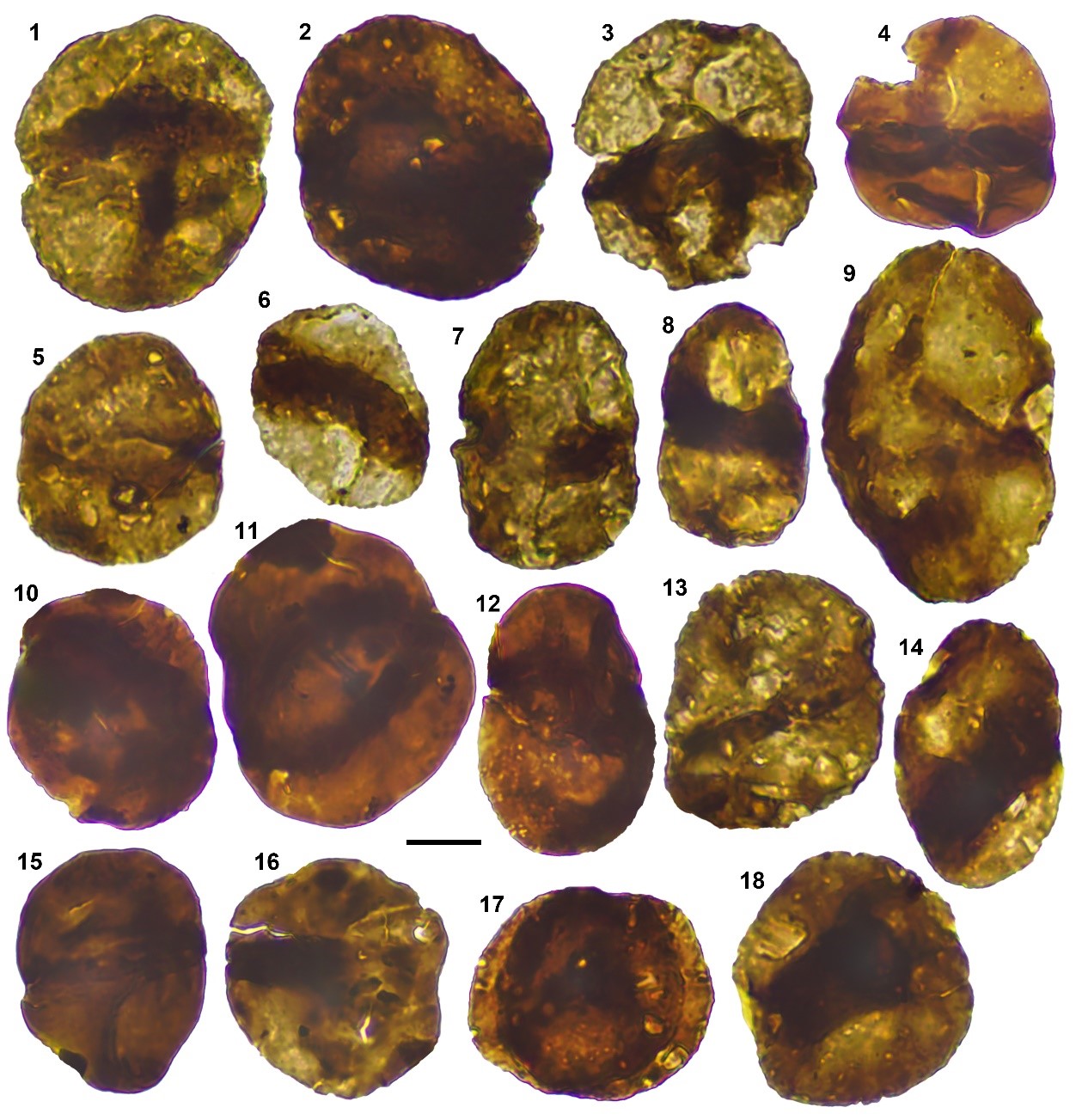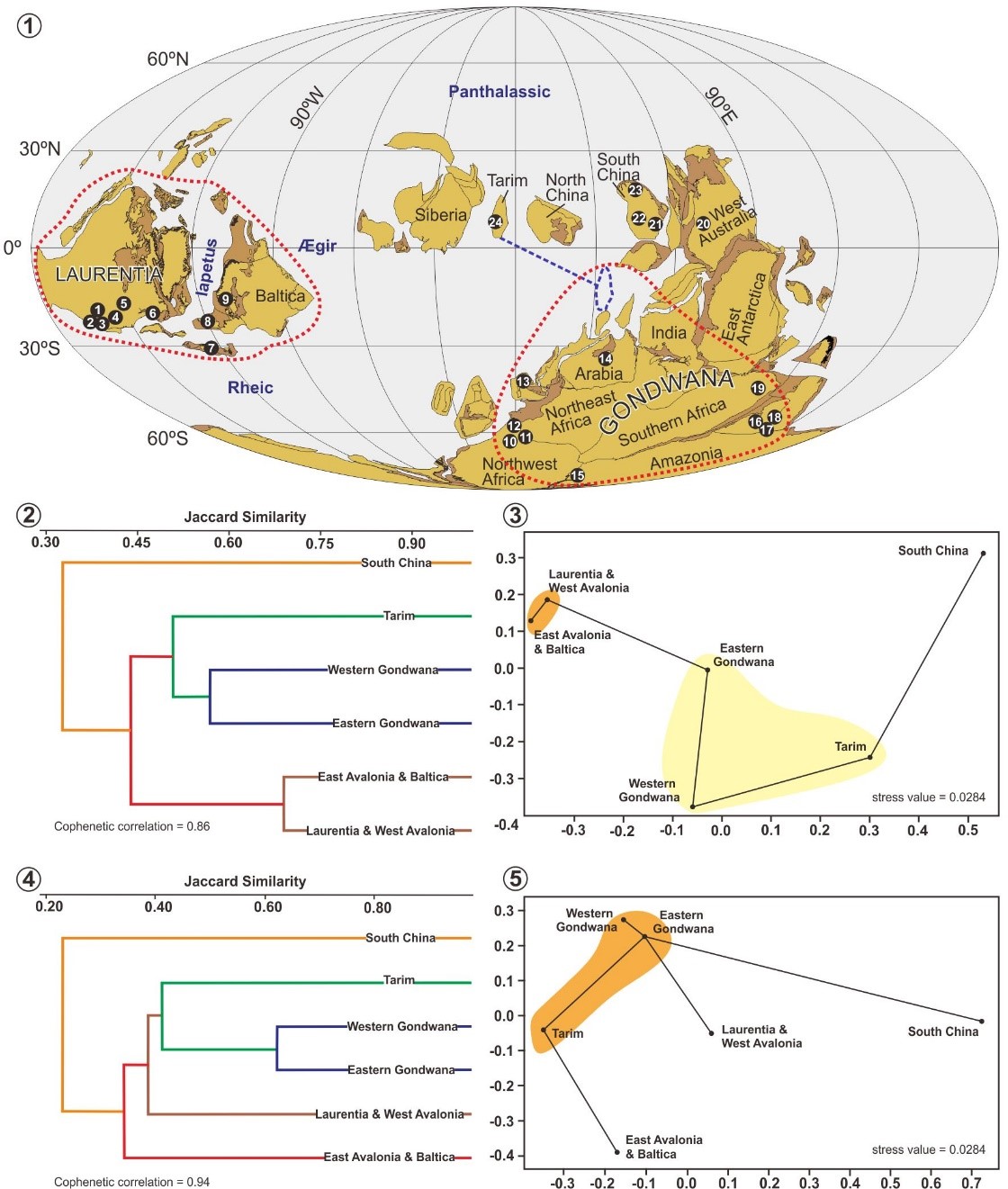The Middle Ordovician-early Silurian is the key period for the origin and early evolution of morphological innovations of land plants. It is widely accepted that the earliest unambiguous fossil evidence of land plants can be traced to the Middle Ordovician Dapingian-Darriwilian stages (ca.468-463Ma), which is represented by dyads and tetrahedral tetrads from the Gondwana continent. In the Sheinwoodian (Wenlock, Silurian) rocks (ca.432Ma), the earliest sporophytes of land plants, e.g., Cooksonia barrandei typically seen in textbook, were found. Strata of the Middle Ordovician-early Silurian interval are target horizon for study on the origin of early land plants. However, the progress of related research is signally delayed for the lacking of terrestrial remains from the lower Paleozoic.
Recently, Early Land Plants working group of Nanjing Institute of Geology and Palaeontology, Chinese Academy of Sciences (NIGPAS), led by Research Professor XU Honghe, conducted a synthetic study on palynological flora from the Llandoverian Kalpintag Formation of the Tarim Basin, southern Xinjiang. The related research results were published online on the international interdisciplinary journal, Journal of Asian Earth Sciences.
In this study, the land plant microfossils revealed from the Kalpintag Formation mainly consist of cryptospores, with only a few tubes and cuticle-like sheets, but no trilete spores have been observed. The Kalpintag cryptospore-producing plants largely inherited, with slight variation, from their predecessors of a Late Ordovician age.
Different from the typical MCA assemblage of early Silurian sporomorphs in China, the Kalpintag cryptospores do not lack dyads, and instead they are dominated by Dyadospora and Pseudodyadospora. Thus, it can be considered that the dyad-producing plants were once the dominant among early non-vascular land plants in the Tarim paleoterrain.
By taxonomic comparisons of global coeval sporomorph records, combined with quantitative analyses (Cluster Analysis and Nonmetric Multidimensional Scaling Analysis), the Kalpintag cryptospores show more closely related to those in northern Chad, northeastern Libya and central Saudi Arabia.
XU says, “the geographical zonation of sporomorph might emerge in the Llandovery, during which the geographical proximity of the Tarim Plate to western Gondwana is suggested”.
This study was supported by the National Key R&D Program of China; and Chinese Academy of Sciences. This work is a contribution to the Deep-time Digital Earth (DDE) Big Science Program.
Reference: Wang K, Liu B-C, Wang Y, Xu H-H*. A palynoflora of southern Xinjiang, China, and the proximity of the Tarim Plate to western Gondwana during the Llandovery (Silurian). Journal of Asian Earth Sciences. 2023, 105769. https://doi.org/10.1016/j.jseaes.2023.105769.


Contact:
LIU Yun, Propagandist
Email: yunliu@nigpas.ac.cn
Nanjing Institute of Geology and Palaeontology, Chinese Academy of Sciences
Nanjing, Jiangsu 210008, China
Download:
